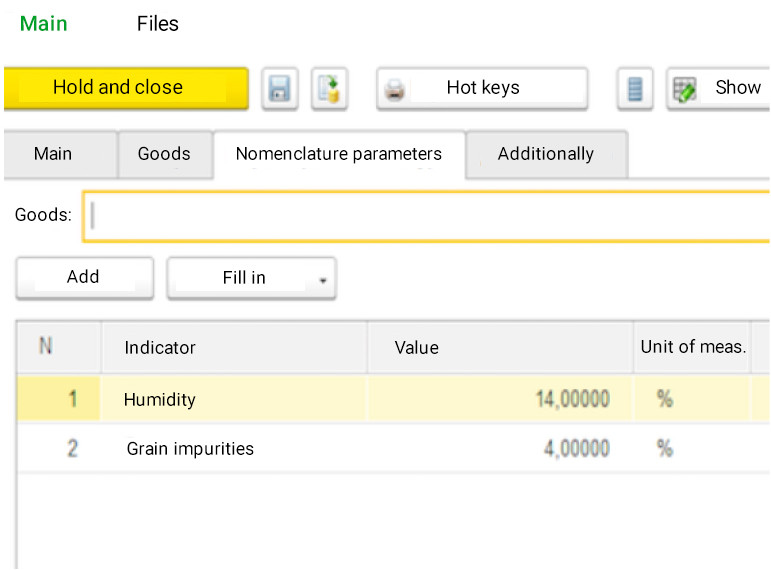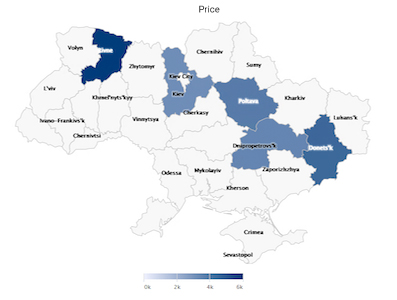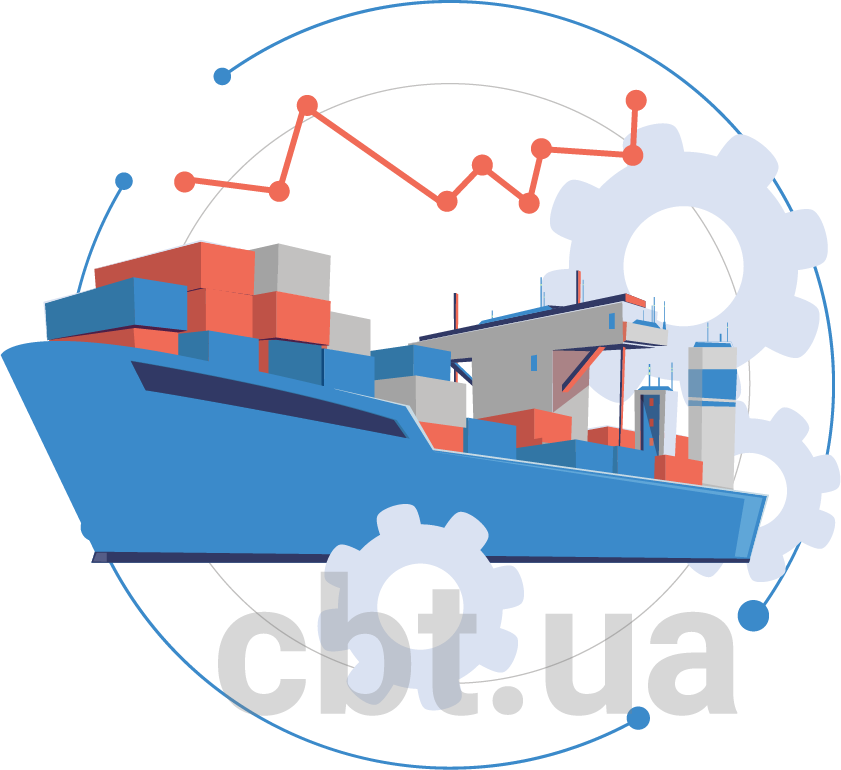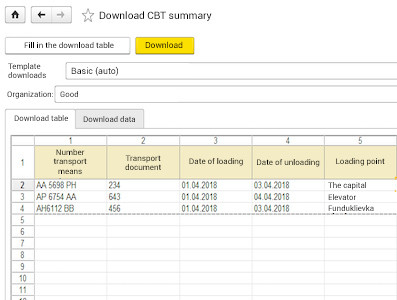
Про програму.
CBT Commodity Trader configuration is designed to automate the trading and purchasing activities of the enterprise, and allows you to efficiently perform the entire cycle of operations in a single database: from analysis of the market price of purchasing inventories to their implementation.
The subsystem allows to calculate the cost of the batch before the moment of purchase of the goods, based on the actual purchase price and all expected costs associated with the purchase, storage and logistics to the place of sale or processing and, compared to the market price, calculate the net profit of this party.
When entering operational data on the movement of a consignment of goods, the cost is recalculated, including the receipt of primary documents from suppliers of goods and services.
Product capabilities.
The CBT Commodity Trader configuration is designed to automate the company’s purchasing and purchasing activities, and allows you to efficiently perform the entire cycle of operations in a single information base: from the analysis of the market price of purchasing inventories to its implementation.
For the analysis of proposals from suppliers and the calculation of the economics of contracts, the introduction of preliminary data is supported for the decision to conclude a contract with the supplier. The offer contains the basic data of the supplier and the calculation of costs from the moment of purchase to the final point of sale. According to the approved application, you can automatically fill in the contract.
- Based on the purchase price of inventories and the cost of costs incurred from the time of purchase to the time of sale, it is possible to estimate the profitability of the agreement on the market price or the sale price.
- The set of costs is determined from the current tariffs for services provided by third parties and estimated costs, such as financing, lending, etc.
- An extended set of details is supported, including: product specification, delivery condition, sender, consignee, Incorterms conditions (EXW, CPT, FOB, FCA, DDP, etc.), points of departure and delivery (with reference to addresses), type of transport, etc.
- The tool of custom templates for printing contracts in Microsoft Word, allows you to display all information about the shipment, supplier, buyer, including qualitative characteristics of the goods established in the system or specifications to the contract
- Mechanisms for tracking the performance of contracts, which allow you to correctly display the open volume of the contract on any date, even if the contract is changed retrospectively; Prohibitions on editing contracts after the start of supply under the contract (except for certain permitted fields)
- Control of performance under the contract (permissible deviations in percentage and absolute). Ability to automatically close the contract when reaching the volume under different conditions or validity
- Accounting for balances of goods within storage, in particular. “On the road”, characteristics, transport and numbers of transport documents
- Parallel accounting in terms of warehouse documents
- Calculation of warehousing costs, in particular, storage services
- Consideration of input / output quality parameters. Calculation of the reduction in the number of stocks taking into account changes in the quality of stocks
- Storing the price of goods in different warehouses for different planning periods “today tomorrow”
- Revaluation of warehouse balances to market price and calculation of profitability
- Revaluation of outstanding volumes of purchase / sale contracts and their comparison with the market price on the date of purchase / sale to determine the profitability of the transaction
- The revaluation takes into account the accumulated costs and planned costs determined at the stage of concluding the contract. It is possible to use the mechanism of fixed costs without taking into account their nature
- Creating applications based on available volumes and transportation needs
- Closing balances (open volumes) on applications directly in the logistician’s calendar
- Application approval. Preparation of permits
- Approval of volume distribution by shipment dates
- Nomination for shipment and redemption of warehouse documents
- Tracking the movement of goods within each transport unit
- Accounting for losses during transportation
- Accounting for distances along the route
- Accounting for carrier services. Automatic calculation of the planned cost of transportation services
- Preparation of relocation registers and primary documents on behalf of the carrier
- Accounting for processing contracts
- Accounting for direct processing costs
- Accounting for multidisciplinary production
- Both own production and toll production are supported
- Controls expected deliveries to the plant. Acceptance procedure: includes security modules: weighing, sample selection and laboratory. Quantitative and qualitative control is carried out at each stage.
- Inventory accounting in the context of each transport unit
- Taking into account the differentiated shelf life of stocks
- Accounting for all port costs. Tariffs for services can be stored in any currency with conversion into the accounting currency
- Planning and accounting of cargo loading on the ship. Accounting for losses at the time of loading with automatic write-off in operational accounting.
- The system allows you to configure and store different types of tariffs and reference information: elevator tariffs (Storage, acceptance, drying, cleaning, shipment, maneuvering, warehousing, re-registration, etc.), transport tariffs, freight forwarders’ tariffs, etc.
- Different bases of tariffs are supported, by volume, per vehicle and by balance by quantity or cost
- Flexible conditions for the application of tariffs, based on customizable “criteria for the application of tariffs” (terms of supply, type of transportation, etc.)
- The unique tool “Distribution of costs incurred in the supply chain by use of stocks” allows you to determine the planned and actual value of stocks at any point of storage.
- The calculation of the operating cost of inventories and finished goods includes the raw material component, actual costs incurred and planned costs, taking into account the batch of inventories
- The mechanism operates on targets until the actual documents are received from the supplier. At the same time, the planned indicators are replaced by actual ones
- Comparison with the market price or sales contract on different bases.
- Tracking the current trading position in terms of sales contracts
- Quantitative and financial position allows to estimate the deficit or surplus of stocks and open volumes of concluded contracts
- Support for building a valuable trading position.
- Multilingual data along with multilingual interface may be required. For example, there is a configuration in which employees from different countries who do not know several languages work
- An unlimited number of data presentation languages are supported.
Scheme of work.
General scheme showing the business process from the collection of trade offers to the sale of stocks or finished products, in the case of a cycle of processing stocks. This preserves the full traceability of the origin of stocks at each stage of the process.

Program functions.
Library of standard subsystems
The subsystem is built on the basis of BSP (Library of standard subsystems), which allows you to integrate the subsystem into any modern configuration BAS.
Keep track of expenses
Store different types of tariffs and distribute the costs incurred in the supply chain by areas of inventory use.
Make a calculation
the planned cost of purchasing a batch of goods Use a convenient built-in mechanism for estimating sales calculations, taking into account all associated costs.
Keep stock records
Carry out operations with stocks. Keep records of all inventory transactions in a single document, track changes at all stages.
Create reporting and analytical forms
Apply a wide range of analytical reports to assess the effectiveness and optimization of operations.
Commodity Trader Advantages.
Minimum number of objects to work with. Maximum functional coverage
through flow. Accounting from the intention to purchase raw materials to the sale of finished products. Material flow – a reflection of changes in inventories
Total cost of inventories
at any storage point at any time. Without additional preparation of the result
The solution is built on a modern platform with unified principles of construction
Integration with solutions on the BAS platform or with third-party ERP systems
Result - full control
over all transactions: from the intention to purchase
before implementation.

Position. Commodity position is quantitative and valuable

Cost. Analysis of the cost of inventories in the flow of the cost structure

Quantity-quality accounting. At any point in the flow of stocks, it is possible to record the quality of stocks

Visual analytical tools. The map visually shows the level of the indicator, for example, areas with a high price – darker
Download summary. Automated download of data on the operational movement of stocks from any tabular documents
Prices for
use of services.
Platform
BAS Малий бізнес. ПРОФ (BAS small business)
Full coverage of management tasks
200$/month
Platform
BAS Малий бізнес. ПРОФ (BAS small business)
Remote access
80$/month



